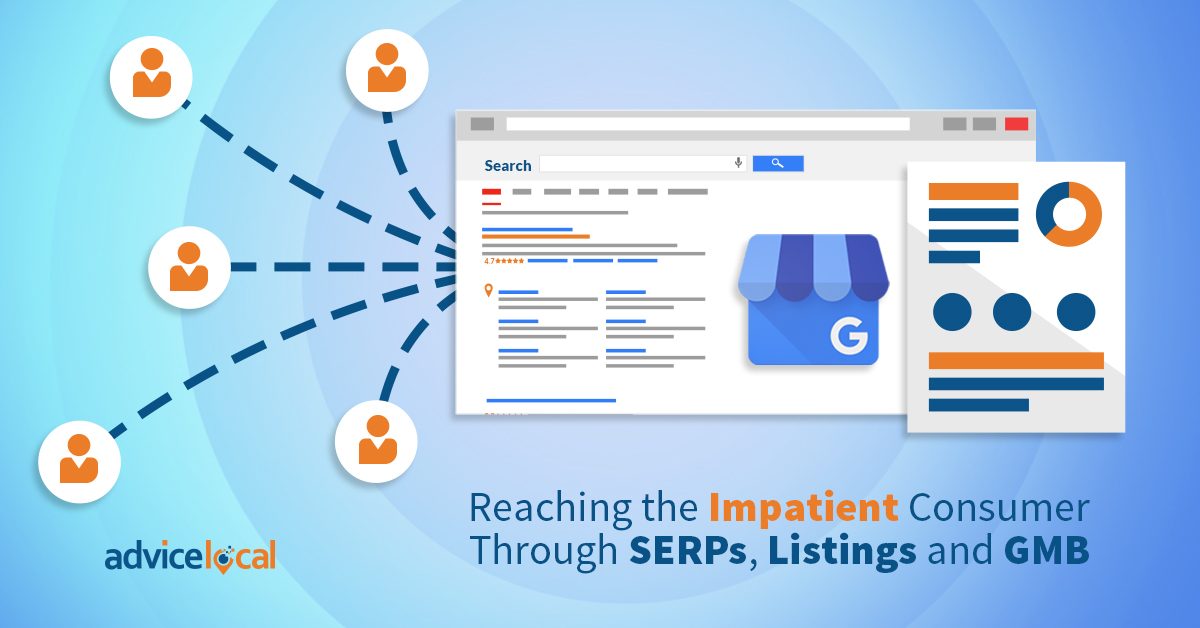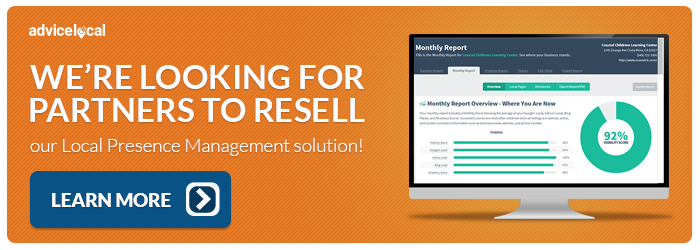Warning: Undefined variable $handle_code in /mnt/wp/advicelocal/public_html/wp-content/plugins/click-to-tweet-by-todaymade/tm-click-to-tweet.php on line 243
Warning: Undefined variable $handle_code in /mnt/wp/advicelocal/public_html/wp-content/plugins/click-to-tweet-by-todaymade/tm-click-to-tweet.php on line 243
The digital era has come with many benefits. From easier ways to connect with people around the world, to getting anything delivered to your doorstep with just a click, consumers are now used to receiving what they want, when they want it and just the way they want it.
Have you noticed that delivery dates keep getting shorter? That’s because this new type of consumer is impatient, just a bit! You might remember when you had to wait 10–14 business days to receive something in the mail. But no one has that kind of time, or patience, anymore.
Do Impatient Consumers Have 200 Percent Less Patience?!
We know this because Google has seen a 200-percent rise in mobile searches for the terms “open” + “now” + “near me” since 2015. This statistic shows that consumers are impatient, and it also shows that they want things close to them – and that is great news for local businesses.
Now more than ever, local businesses need to understand this new consumer – the “super-empowered” consumer – and how to better serve them.
Three Things Local Businesses Can Do to Reach Today’s Impatient Consumers
1. Get Clear on What They Offer in Local Business Listings
A business must make sure they are clear on the products and services they offer, and where they offer them. Accurate and up-to-date information on Google Business Profile (formerly Google My Business) and other local listings and directories is essential. And yes, don’t forget to include images! An optimized listing that includes photos, reviews, and seasonal information like holiday hours and offers will convert at a higher rate.
Always give clear answers. Sometimes things happen that can stop a local business from performing the way they usually do. Changes in address and phone numbers, early closing hours and so on, should be made in real-time to give consumers information that is as accurate as possible. (Make sure you have a tool and process that supports this, btw.)
2. Take Customer Service to the Next Level
In this day and age, stellar customer service gets traction. You’ve heard the term “word of mouth.” Well, technology takes it to the next level. It’s about “world of mouth,” too. In fact, 84 percent of consumers trust online reviews as much as personal recommendations from friends and family.
Through social media features such as Facebook Recommendations, the power of recommendations is placed right at the fingertips of its users. People can ask for suggestions via posts on Facebook, and their friends can contribute comments to help them. If the business you represent is offering stellar customer service, then it will be one of the businesses getting recommended.
Local businesses can also take advantage of social media tools that automatically reply to basic customer inquiries 24/7. For example, Facebook has a Response Assistant that can be set up to reply to anyone that messages the page privately.
3. Feature Seasonal Offers and Products
Advertising current products and services, focusing on those that people need most during that particular season, is the way to go. This could be done through pay-per-click and/or through content optimization.
For example, a plumbing company might want to highlight their “frozen pipes repair services” during the winter months, and downplay services that are more often needed during the summer, such as “sprinkler repair.”
But Wait, There’s More…
Invite Everyone to the Grand Opening with GBP
Having an online presence before a business officially opens to the public was once reserved for multi-location businesses that could leverage their existing social media platforms to announce new locations. But now, everyone gets a chance to do it on Google Business Profile.
This week, Google announced that GBP will now allow businesses that are not yet open to create a listing before their grand opening. Wouldn’t it be great to inaugurate the listing with a super deal announced exclusively on GBP? Businesses can also create an event on their GBP listing to invite everyone to their grand opening. (Remember, while most posts expire after 7 days, an event will not expire until it passes.)
Optimization Is Key Since Less Consumers Are Clicking
With the rise of voice search, local businesses need to find every listing and online directory opportunity they can and submit their information. They need to make sure their listings are optimized, that they are answering reviews – both positive and negative – and that they are replying to messages and giving accurate answers to any inquiries.
This is particularly important now that Google, Facebook, and other search engines seem to be diverting traffic from websites. Since all the information a user may need is now available directly on search engines – through featured snippets, Google Business Profile and Maps – it’s not surprising that people are no longer finding their way to a local business’ website.
The rate at which this is happening is alarmingly high, particularly in mobile, which is seeing over 60 percent of all Google searches resulting in zero clicks. So what does this mean? It shows that people are finding their information right on the screen, without the need to click on any of the actual search results!
In response, what can local businesses do to stay on top of the game? To begin: Make sure every listing, particularly Google Business Profile and Bing Places, is optimized with accurate and current information. As mentioned above, if a business has holiday hours, update them ahead of the holiday season. Share images from team members, from products and services, and from brick-and-mortar locations.
It’s Time to Implement Lazy Loading, Says Google
As you know, images and videos on websites can significantly impact page speed. Low page speeds are a definite no-no, particularly on mobile, because who wants to wait forever until an image loads? Not the impatient consumer I’ve been talking about today, that’s for sure.
When it comes to websites, it seems that we have Google’s blessing to get lazy. And by “lazy,” I don’t mean you should avoid uploading images or videos, and just leave web pages with a big wall of text and not much else. (Come on, this isn’t 1999!) When I say “lazy” here, I’m talking about lazy loading.
Search Engine Journal’s Matt Southern shared guidelines created by Google that give advice to SEO experts on implementing lazy loading for images and video. “Lazy loading refers to the technique of deferring loading of non-critical or non-visible content,” writes Matt.
As this could be a game-changer for local businesses, I wanted to dig a little deeper on this topic, and found an interesting article published on Google’s Developer Web Fundamentals. According to the article, “non-critical” content refers to “off-screen” content. This means that lazy loading is just a way to improve page speed by not loading images and videos until the user gets to them. You’ve probably experienced this technique in action as you’ve scrolled down a web page yourself.
Help Is on the Way – Always
Fortunately, helping local businesses optimize their listings, their content, their page speed, and their contact information everywhere on the web is our area of expertise. Request a demo today to see exactly how we can help you to help these local businesses!




